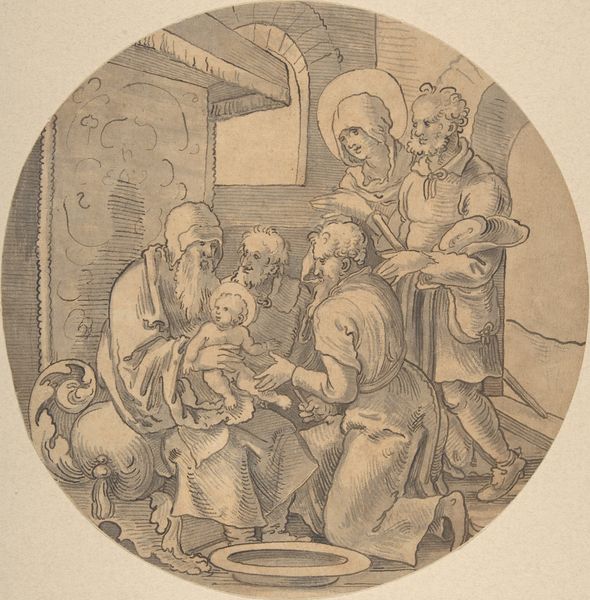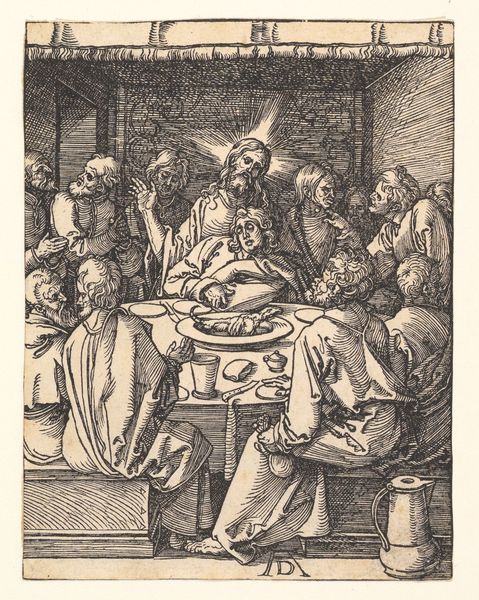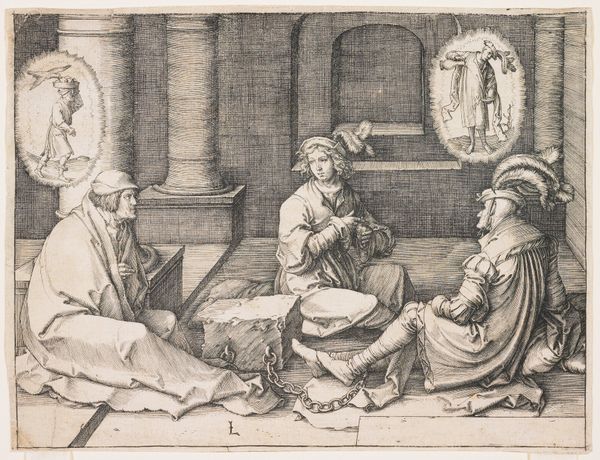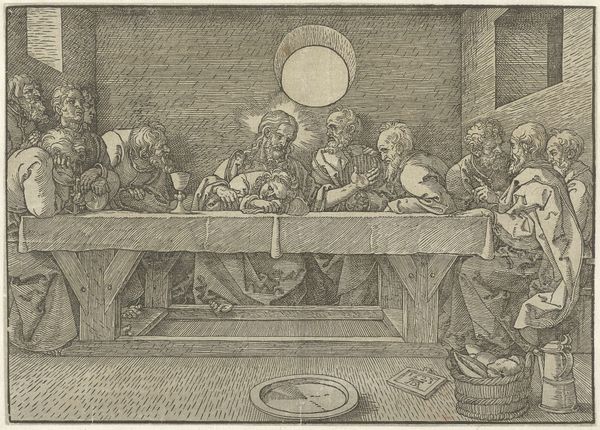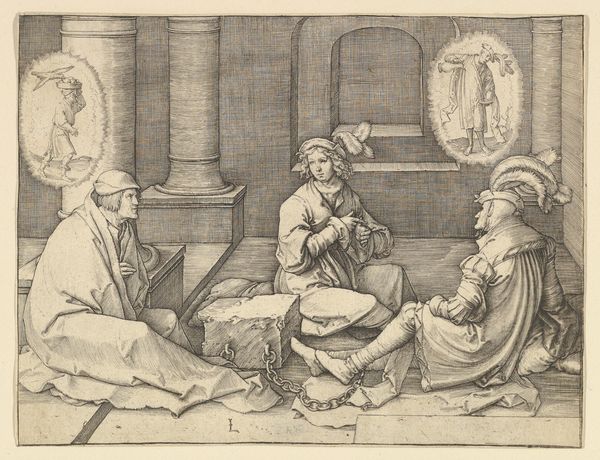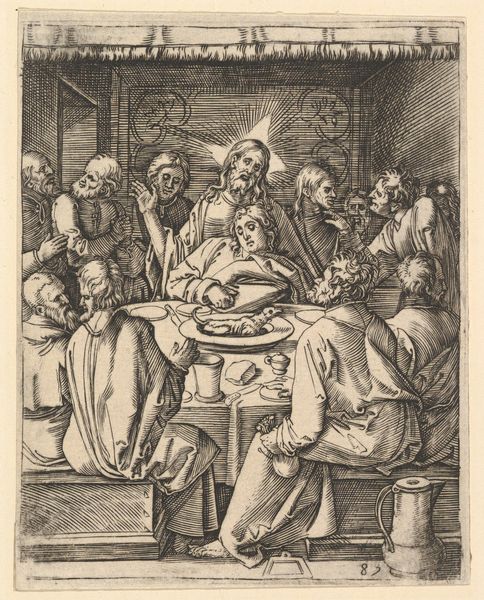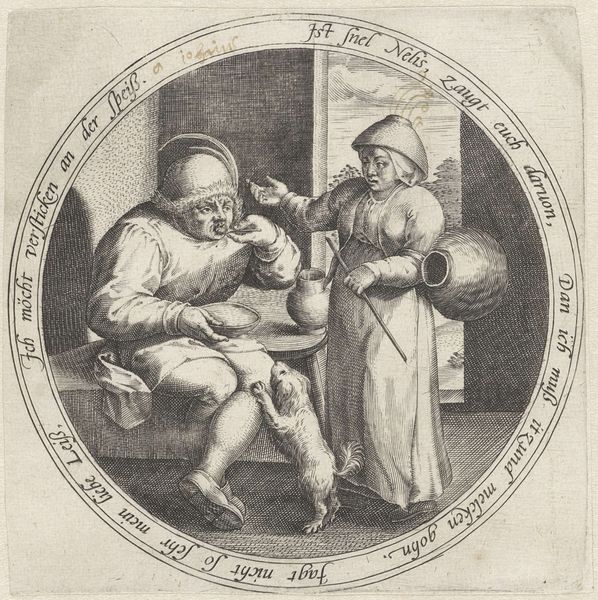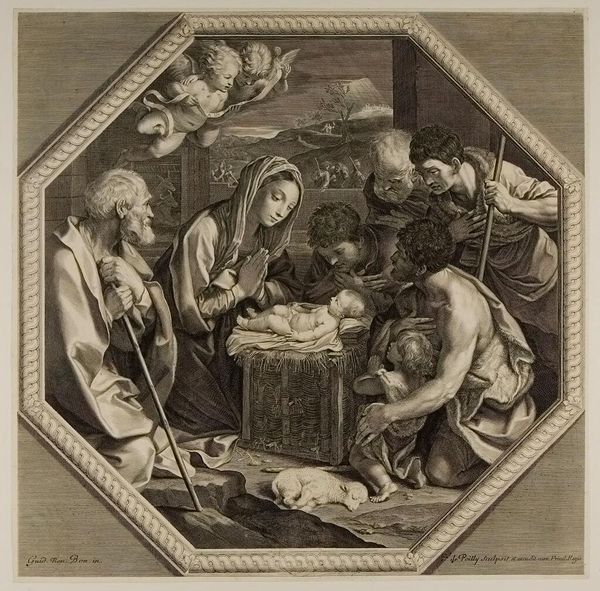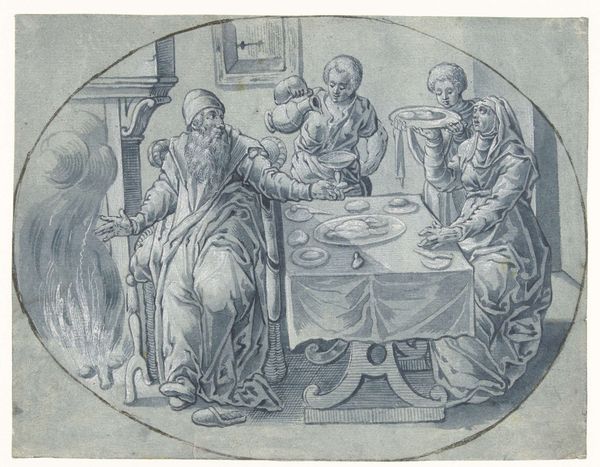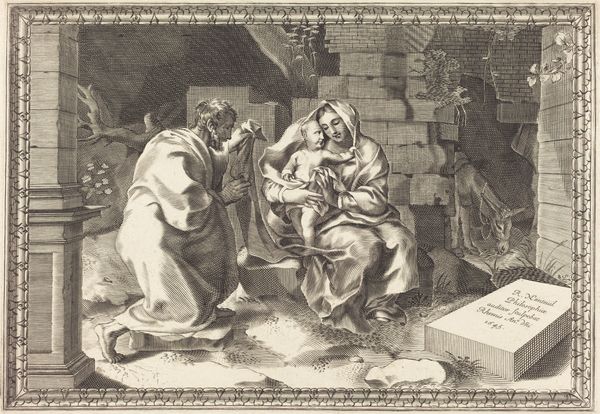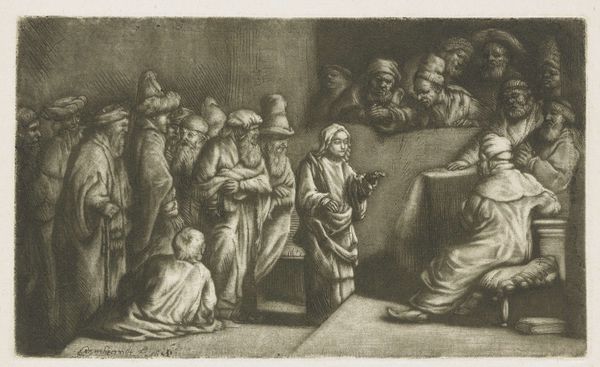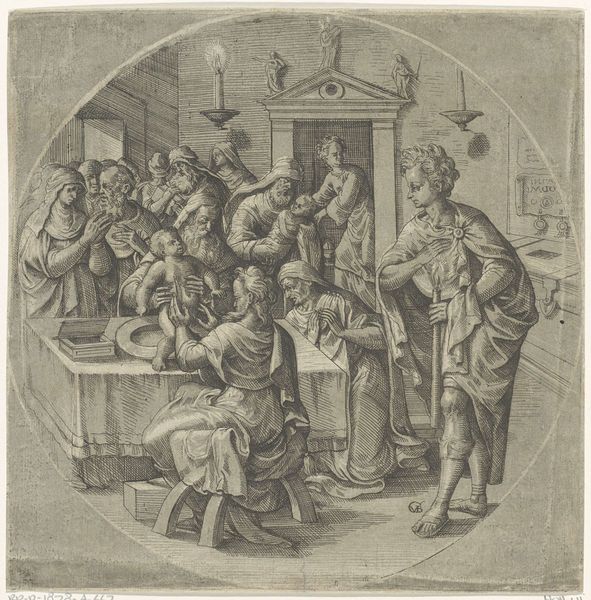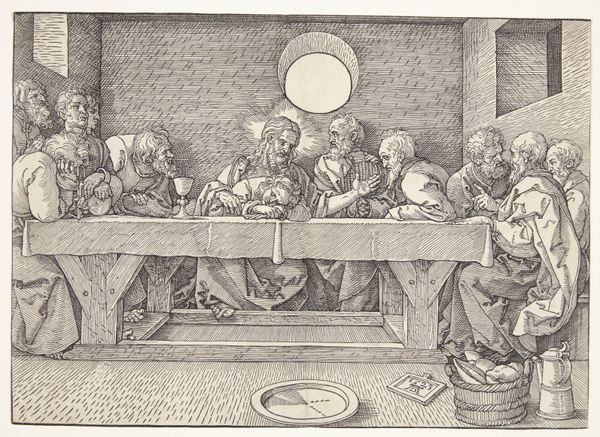
drawing, paper, ink
#
drawing
#
baroque
#
figuration
#
paper
#
ink
#
history-painting
Copyright: Public Domain: Artvee
Editor: Here we have Bartolomé Esteban Murillo’s "The Christ Child as the Good Shepherd", dating from between 1675 and 1680. It’s an ink drawing on paper. It strikes me as quite an intimate portrayal of a historical scene. What aspects of this artwork particularly grab your attention? Curator: It is in the circular, "tondo", format and my initial impression is how Murillo guides the eye. Consider how the strong diagonal lines created by the figures’ stances bisect the circle. Observe, too, how light and shadow play a critical role. Editor: I see what you mean. The light seems to be focused on the Christ child. But how does this guide our reading of the work formally? Curator: Precisely. Murillo employs the contrast of light and shadow—chiaroscuro—to emphasize the central figure. The darker tones frame and thus isolate the scene, enhancing the composition's dramatic tension and imbuing it with the symbolic weight characteristic of Baroque art. Do you notice the orthogonals in the back that imply depth? Editor: Yes, the linear perspective does create a sense of depth despite the confined space. What do you make of the tondo format itself? Does it add to your interpretation? Curator: Undoubtedly, the tondo’s circular form unifies the composition, mirroring the halo above Christ’s head. The lack of sharp corners further emphasizes a continuous, unbroken narrative – a world, if you will. Editor: So, you're saying that through careful choices of composition and tone, Murillo directs our gaze and shapes our understanding of the sacred narrative? I never would have noticed how every element contributes to such a comprehensive whole. Curator: Precisely, and these elements invite us to investigate beyond the mere representation of a story, opening pathways toward a more profound reflection on its very structure and purpose.
Comments
No comments
Be the first to comment and join the conversation on the ultimate creative platform.
